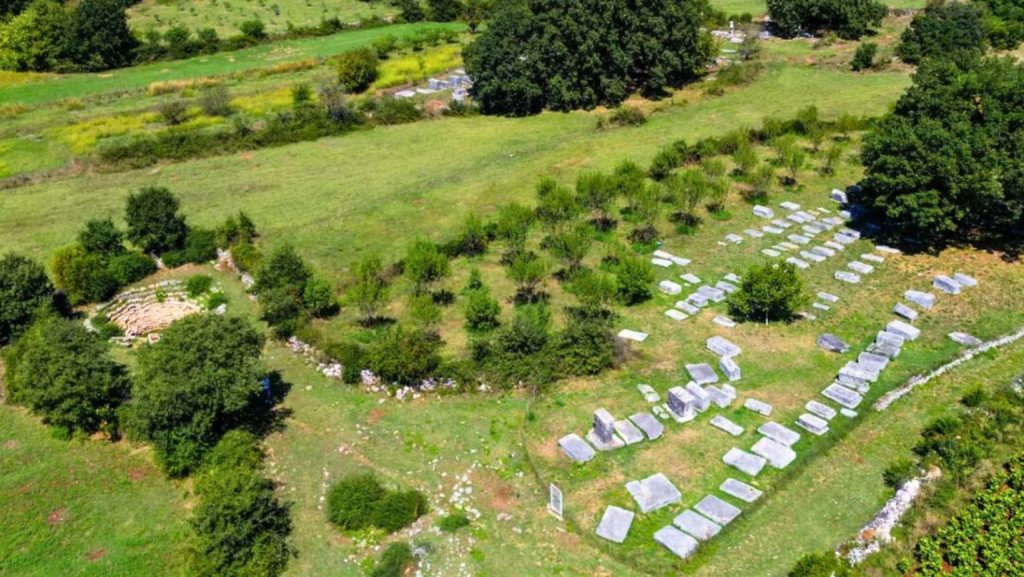
Hidden in the shade of an ancient forest at the Goršić Polje or Kučarin site, in the Vranci hamlet of Hrančići village, lies one of the largest necropolises of stećaks, just 15 kilometers west of Goražde. This significant medieval burial site, featuring 325 stećaks today, once held many more, illustrating the rapid disappearance of our medieval heritage.
The Necropolis: Divided but Preserved
A local road now cuts through the necropolis, dividing it into two groups: a larger group with around 300 stećaks and a smaller group with about 30. This division likely destroyed some stećaks and graves underneath. Many stećaks are significantly sunken into the ground, with some at risk of slipping beneath the road, far from the main necropolis. The sheer number of stećaks indicates that a large and important medieval settlement once existed in the vicinity.
Unique Stećak Designs and Decorations

Of the 325 stećaks, most are in the form of chests, with many slabs and a few gabled roof tombstones. They are primarily oriented west-east, arranged in relatively orderly rows on a fairly flat hill. Four stećaks feature notable decorations:
- First Stećak: Displays a lily motif in high relief on its top surface.
- Second Stećak: Bears a lily motif in high relief on the western front side.
- Third Stećak: The most intriguing, crafted as a chest with a deep stone trough extending across its top, bordered by a twisted rope design, indicating its use in certain cult practices. The western front side has a cross with circular endings within a plastic circle, while the southern side depicts a deer. The eastern front side features three four-pointed stars.
- Fourth Stećak: Adorned with a sickle motif.




